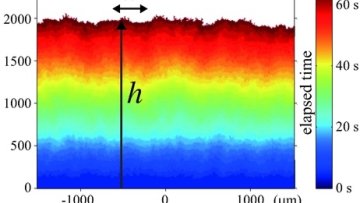Nestedness in bipartite networks
Abstract
Many real networks feature the property of nestedness, i.e. the neighbours of nodes with a few connections are hierarchically nested within the neighbours of nodes with more connections. Despite the abstract simplicity of this notion, different mathematical definitions of nestedness have been proposed, sometimes giving contrasting results. Moreover, there is an ongoing debate on the statistical significance of nestedness, since even random networks where the number of connections (degree) of each node is fixed to its empirical value are typically as nested as real-world ones. In this talk we show unexpected effects due to the recent finding that random networks where the degrees are enforced as hard constraints (microcanonical ensembles) are thermodynamically different from random networks where the degrees are enforced as soft constraints (canonical ensembles). We show that if the real network is perfectly nested, then the two ensembles are trivially equivalent and the observed nestedness, independently of its definition, is indeed an unavoidable consequence of the empirical degrees. On the other hand, if the real network is not perfectly nested, then the two ensembles are not equivalent and alternative definitions of nestedness can be even positively correlated in the canonical ensemble and negatively correlated in the microcanonical one. This result disentangles distinct notions of nestedness captured by different metrics and highlights the importance of making a principled choice between hard and soft constraints in null models of ecological networks.
[1] Bruno, M., Saracco, F., Garlaschelli, D., Tessone, C. J., & Caldarelli, G. (2020). Nested mess: thermodynamics disentangles conflicting notions of nestedness in ecological networks. arXiv preprint arXiv:2001.11805.
Oxford Mathematician Weijun Xu talks about his exploration of the universal behaviour of large random systems:
"Nature comes with a separation of scales. Systems that have apparently different individual interactions often behave very similarly when looked at from far away. This phenomenon is particularly attractive when randomness is involved.
Atomic structures and the statistical mechanics of networks
Abstract
We consider random graph models where graphs are generated by connecting not only pairs of nodes by edges but also larger subsets of
nodes by copies of small atomic subgraphs of arbitrary topology. More specifically we consider canonical and microcanonical ensembles
corresponding to constraints placed on the counts and distributions of atomic subgraphs and derive general expressions for the entropy of such
models. We also introduce a procedure that enables the distributions of multiple atomic subgraphs to be combined resulting in more coarse
grained models. As a result we obtain a general class of models that can be parametrized in terms of basic building blocks and their
distributions that includes many widely used models as special cases. These models include random graphs with arbitrary distributions of subgraphs (Karrer & Newman PRE 2010, Bollobas et al. RSA 2011), random hypergraphs, bipartite models, stochastic block models, models of multilayer networks and their degree corrected and directed versions. We show that the entropy expressions for all these models can be derived from a single expression that is characterized by the symmetry groups of their atomic subgraphs.
Problems on compatible systems of Galois representations
Abstract
We will discuss some problems around independence of l in compatible systems of Galois representations, mostly focusing on the independence of l of algebraic monodromy groups. We will explain how these problems fit into the context of the Langlands program, and present results both in characteristic zero and in positive characteristic settings.
How close together are the rational points on a curve?
Abstract
Understanding the size of the rational points on a curve of higher genus is one of the major open problems in the theory of Diophantine equations. In this talk I will discuss the related problem of understanding how close together rational points can get. I will also discuss the relation to the subject of (generalised) Wieferich primes.
Random matrices over p-adic numbers
Abstract
The goal of this talk is to introduce a way to use the philosophy of Random Matrix Theory to understand, pose, and maybe even solve problems about p-adic matrices.
Periods and the motivic Galois group
Abstract
A long time ago, Grothendieck made some conjectures. This has resulted in some things.


